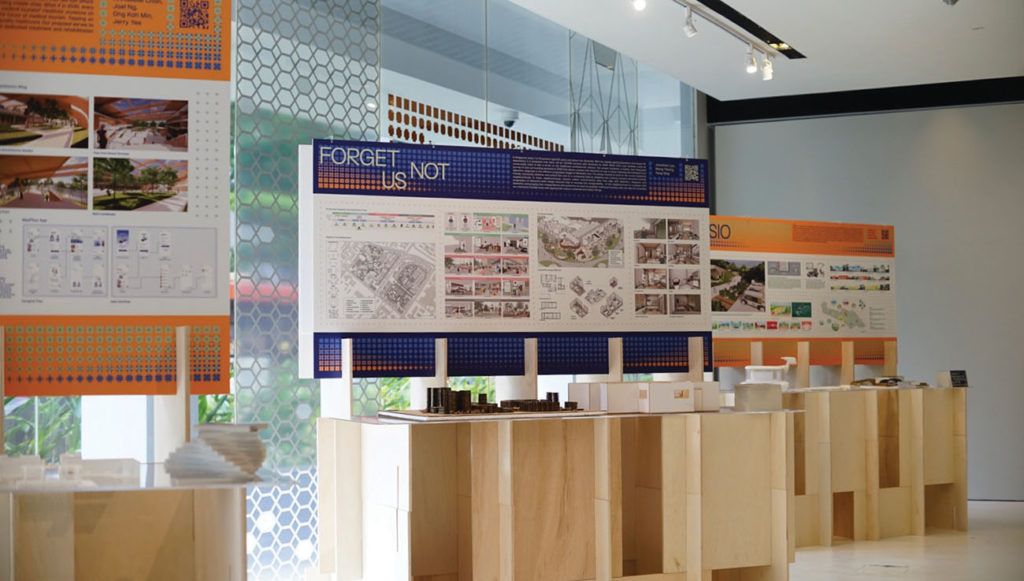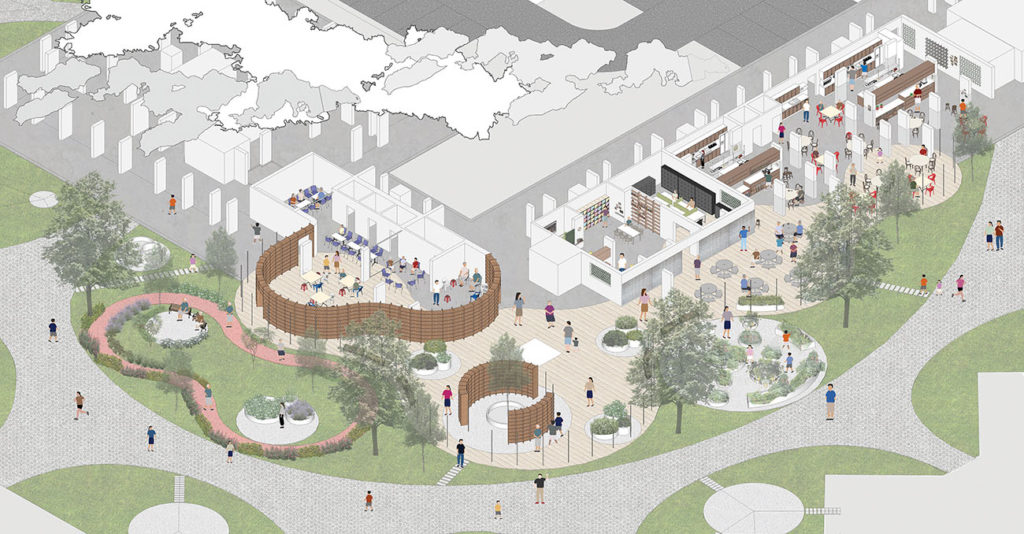2nd Quarter 2022
How emerging architectural technologies can decentralise healthcare
June 15, 2022
The field of healthcare has typically been one that applies the latest cross-discipline technological advancements to treat illnesses. But more than just physical wellness, healthcare has also been evolving to take into account people’s well-being in the holistic processes of diagnosis, treatment and prevention of diseases. This also entails a consideration of our everyday environments.
The topic of how healthcare systems could be distributed through emerging technologies into our various living spaces—such as transit hubs, communal areas and homes—was part of the exhibition titled Healthcare 2030: The Future of Distributed Healthcare at Singapore’s National Design Centre. Running from 11 March to 7 May 2022, five projects by students in the joint studio by Philips-NUS (National University of Singapore) were exhibited.
RELATED: An oldie but a goodie: A 140-year-old convent with multiple lives


Healthcare in transit
Mobile medical services like pop-up testing and quarantine facilities had rapidly grown to meet healthcare needs during the pandemic. Applying this concept to medical tourism on a global scale, HealthAir by Joel Ng Jo-Wei, Jerry Yee Heng Jie, Ong Kah Min, and Anabelle Chan Pei En envisioned an ‘airport-medical facility’ archetype, with the pilot designed at Terminal 4 of Changi Airport. The facility would allow more people to access quality treatment that is “seamless and undisrupted” within transnational borders.
The Diabetic Care Hub by Joanne Wong Jinn Yi, Sharmaine Lee Pui Fong, Prasanth Kumaar Kunasilan and Chin Kar Fai took advantage of Singapore’s Park Connector network to install both Nature-based treatments and novel technologies for the diagnostic, care and treatment of diabetes, which is one of the century’s fastest-growing health challenges (read the Project Profile in this issue to find out more).


Healthcare in community spaces
Reflecting the rising trend of biophilic architecture in hospitals, FYSIO by Jaslynn Ho, Huo Yujia, Nathaniel Ng Wei Tun and Loo Zi Ling created interactive ‘huts’ for physiotherapy within parks. Using a suite of apps and shuttles, neighbouring communities of all ages can be connected to form social support groups to take part in regular fitness routines.
Meanwhile, Forget Us Not by Wang Yisang, Yang Qing, Wong Yu Ting Ashlyn and Jonathan imbued neighbourhoods with sensors so that persons with dementia will be able to navigate with independence and autonomy.
“This project is immensely meaningful to us as we are reaching an age where many of our grandparents and parents are at risk of dementia … While there are dementia-friendly communities, not much is being done in our physical environment,” said the students. They also hoped that the information will help the community to be better prepared to handle dementia.


Tele-health and big data
Mental healthcare has become increasingly destigmatised, with the rise of social media where people can share their experiences and have access to online platforms that can connect them remotely to services. It is no secret that the information we put online is ‘digested’ out of big data, which is currently regurgitated back at us in the form of targeted advertising.
Such technologies are proposed in the project The Nest by Chin Wen Xuan, Ow Yeong Jun Jie, Koh Bei Ning and Sim Lee Ting to boost mental health services in Singapore. They envisioned that data from people’s online activities and physical movements could be tracked and analysed to shed light on people’s emotional states, and hence pre-emptive measures taken when necessary. A continuous assessment of mental health monitoring will be enabled through three components: a robotic smart companion, artificial intelligence (AI)-trained mood support, and flexible neighbourhood spaces.

“These interdisciplinary design solutions were conceived as we researched and worked to address the challenge to explore healthcare as a distributed system in different contexts such as in transit spaces, in the community and in homes,” said Joanne Wong, a Year 5 student who is also this exhibition’s organiser. “We’re envisioning a human-centred healthcare system which traverses different scales and experiential touchpoints.”
RELATED: Project | The Diabetic Care Hub

Read more stories from FuturArc 2Q 2022: New & Re-Emerging Architecture!

To read the complete article, get your hardcopy at our online shop/newsstands/major bookstores; subscribe to FuturArc or download the FuturArc App to read the issues!
Previously Published Happening
Contact us at https://www.futurarc.com/contact-us for older articles.

